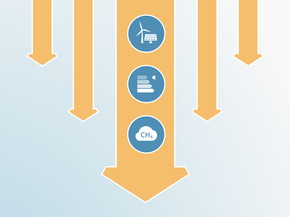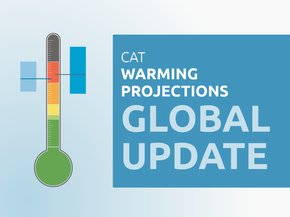Assumptions
Historical emissions
Historical emissions are taken from UNFCCC (2016) for 1994, 2000 and 2010. The 2007 data point was obtained from the Second National Communication (Government of India, 2012). Between these data points trend interpolation was performed. Before 1994, trend extrapolation was performed to complete the series from 1990–2010. The emissions for 2014 are sourced from the Biennial Update Report 2 (Government of India, 2018).
Beyond 2014, a combination of different sources was used to complete the emissions trajectory excluding LULUCF. Energy-related CO2 emissions were obtained by combining both power sector emissions from the Central Electricity Authority’s National Electricity Plan and non-power sector emissions from the IEA’s 2019 World Energy Outlook and applying the growth of those sources to inventory data. Cumulative emissions between 2011 and 2015 from the National Electricity Plan are 3.7 GtCO2, significantly lower than the IEA’s estimates for the same period (4.9 GtCO2). Non-CO2 emissions were based on growth rates of US EPA projections (U.S. Environmental Protection Agency, 2019)and other CO2 emissions were based on extrapolations using historical data from UNFCCC and growth rates for cement production from IEA (IEA, 2018a).
NDC and other targets
For consistency with the current policy projections, the intensity targets for 2020 and 2030 are quantified based on GDP assumptions from the National Electricity Plan (CEA, 2018), adjusting the growth rate in 2020 and 2021 to take into account the impact of COVID. GDP is assumed to grow by 7% on average in the period 2017–2030, with an exception for 2020 and 2021, where , GDP is assumed to fall by between 3.7 and 7.3% in 2020 and then increase with a slightly higher rate of between 7.9 and 8.1% in 2021, corresponding with the two OECD scenarios (single- and double hit) for the COVID-19 impact for India (incl. ref. OECD 2020). These GDP growth projections are used for both the targets and current policy projections. The Indian Government aimed for higher GDP growth of around 8% per year in its 12th Five Year Plan (Government of India, 2013) and NDC (Government of India, 2015), but has not yet been able to achieve its aspirations.
The 2020 pledge to reduce the emissions intensity of GDP by 20% to 25% below 2005 by 2020 excluded agriculture. We assumed this is also the case for the 2030 target, even though it is not mentioned in the NDC. The emissions level resulting from this target after adding agriculture emission projections from US EPA would be 5.4 – 5.7 GtCO2e by 2030 (8-11% lower than our estimate from December 2019, as we take into account the expected reduction in GDP due to the pandemic).
The 40% capacity target is based on the updated current policy pathway and is calculated by replacing non-fossil power with fossil power. For the lower end of the current policy pathway, 65% non-fossil capacity can be achieved in 2030. For the upper end of the current policy pathway, 60% can be achieved in 2030. If, conforming with India’s NDC, only 40% non-fossil capacity was achieved in 2030, this would result in substantially higher emissions (21-29%) above the upper end of the current policy pathway. Power sector emissions projections from the National Electricity Plan were used as the basis upon which assumptions were applied to create the current policy pathway (see below). No adjustment has been made to account for the impact of COVID-19.
Current policy projections
Current policy projections are based on power sector emissions from the NEP and non-power energy-related CO2 emissions from the World Energy Outlook 2019 Current Policy Scenario. In our projections, we assume a growth of electricity demand of 5.4% per year from 2015–2030 based on the NEP. These are combined with the US EPA non-CO2 emissions projections until 2030 (U.S. Environmental Protection Agency, 2019) and extrapolation of other CO2 emissions based on cement projections from the IEA (IEA, 2018a).
Based on the NEP, a range was developed with the higher end indicating an underachievement of the 175 GW renewables capacity in the target year (2022) and the lower end indicating an overachievement of the same target. The renewables capacity target for 2022 is reflected in the NEP. The lower, more ambitious bound is based on reports that India could exceed its 2022 renewables capacity target and reach 227.6 GW in 2022, whereas the upper, less ambitious bound is based on reports that renewables expansion is slower than expected and the 2022 target will not be achieved (BRIDGE TO INDIA, 2018).
The author of the National Electricity Plan, Central Electricity Authority (CEA), compiles and presents data in fiscal years that extend from 1 April of the first year to 31 March of the following year. Since the CEA does not provide a breakdown by month and the bulk of the time period falls into the first of the two listed years, data was allocated to the first year. This means that emissions data provided by the CEA for the fiscal year 2026/27, for example, was allocated to 2026.
The capacity additions from fossil and non-fossil sources until 2026/27 are estimated according to the NEP, meaning that unlike the previous draft of the Electricity Plan, capacity additions from coal are required in both the period to 2022 and 2027. The NEP projects that an increase in coal capacity will compensate for a 30% decrease in hydro power generation as a result of insufficient rain/monsoons. Using average annual installed capacities during the 2021–2026 period, capacity additions until 2030 are projected. Installed capacities serve as a basis to calculate the electricity generation and the corresponding emissions from the power sector using the generation factors (i.e. kWh/MW) from the WEO 2017 as generation figures were not provided in the NEP.
COVID-19 impact
We applied a novel method to estimate the COVID-19 related dip in greenhouse gas emissions in 2020 and the deployment through to 2030. The uncertainty surrounding the severity and length of the pandemic creates a new level of uncertainty for current and future greenhouse gas emissions. We distil the emission intensity (GHG emissions/GDP) from the pre-pandemic scenario range described above and apply to it most recent GDP projections that take into account the effect of the pandemic. To capture a wide range, we analysed four different scenarios for 2020 and 2021, two from OECD (single- and double hit), as well as a recent IMF and a Worldbank scenario (IMF, 2020) (World Bank, 2020) (OECD, 2020a) (OECD, 2020b). The two OECD scenarios cover the range of uncertainty, with IMF and Worldbank-scenarios falling within this range. We use the GDP growth rates until 2030 that wer used as a basis for the original pre-pandemic current policy scenario from 2022 onwards.
Global warming potentials
The CAT uses Global Warming Potential (GWP) values from the IPCC's Fourth Assessment Report (AR4) for all its figures and time series. Assessments completed prior to December 2018 (COP24) used GWP values from the Second Assessment Report (SAR).
Further analysis
Latest publications
Stay informed
Subscribe to our newsletter




